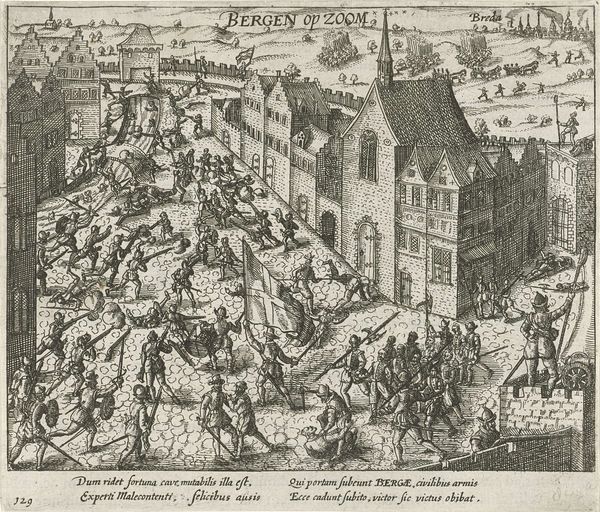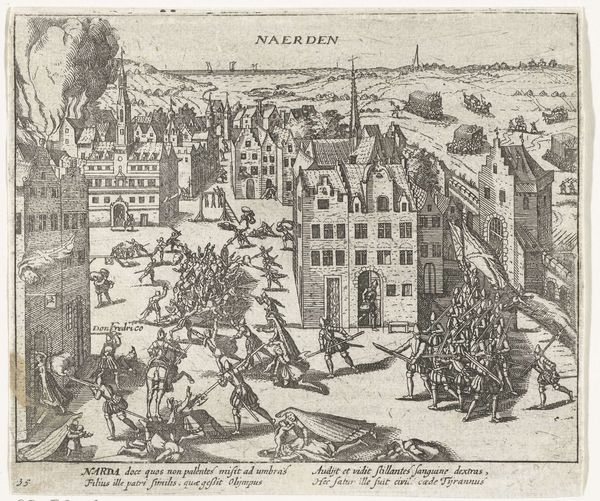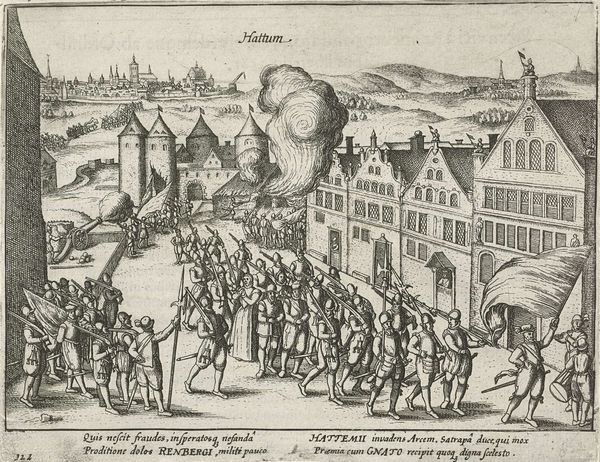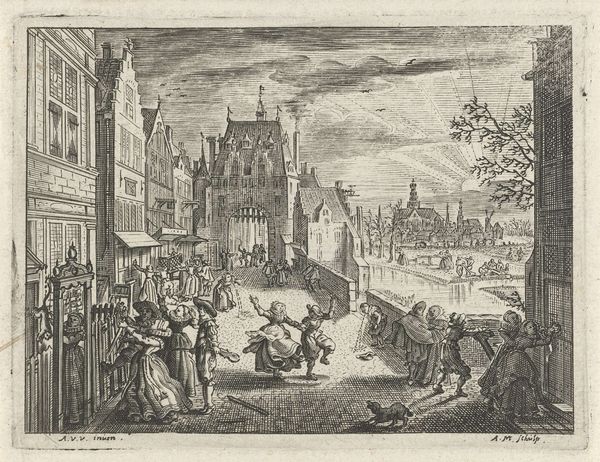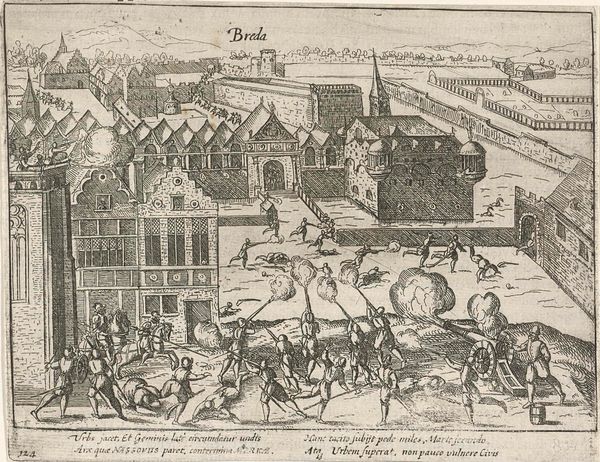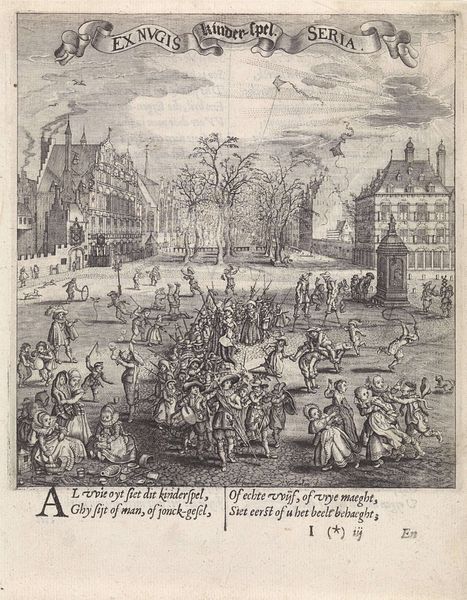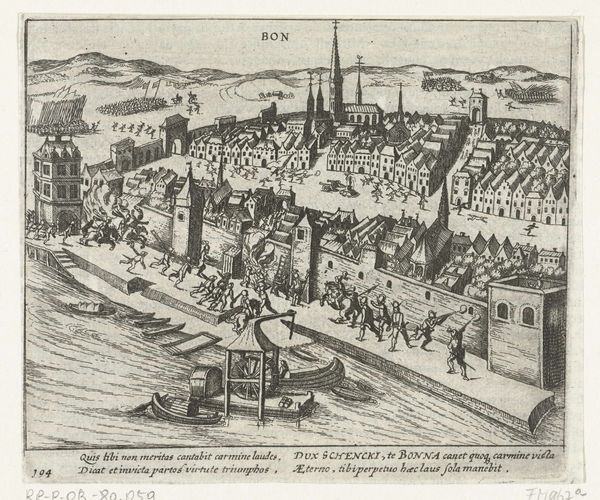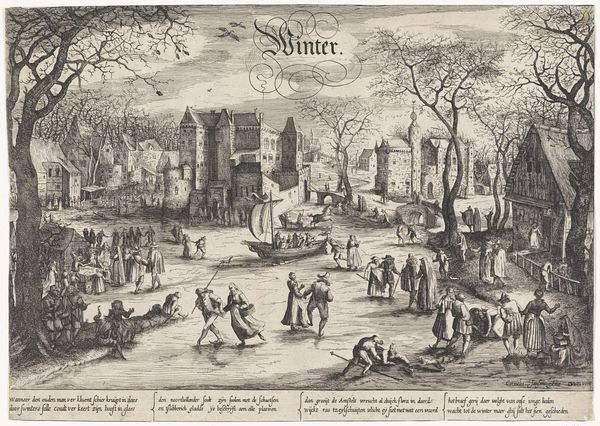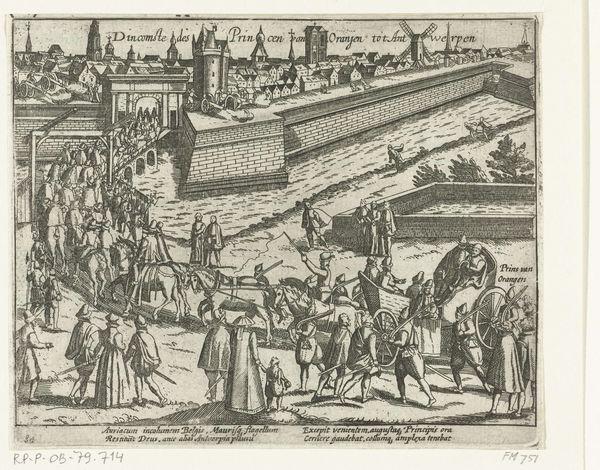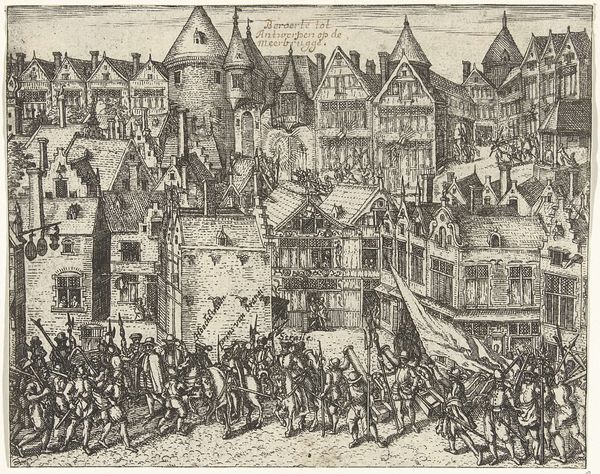
print, engraving
#
narrative-art
#
mechanical pen drawing
# print
#
pen sketch
#
old engraving style
#
personal sketchbook
#
sketchwork
#
pen-ink sketch
#
pen work
#
sketchbook drawing
#
cityscape
#
genre-painting
#
history-painting
#
storyboard and sketchbook work
#
northern-renaissance
#
sketchbook art
#
engraving
#
calligraphy
Dimensions: height 137 mm, width 161 mm
Copyright: Rijks Museum: Open Domain
Editor: Here we have an engraving, "Plundering van Mechelen, 1572," made between 1613 and 1615, by an anonymous artist, now housed in the Rijksmuseum. It feels chaotic, doesn't it? Like a snapshot of a city under siege. What strikes you when you look at it? Curator: Ah, chaos wonderfully rendered! For me, it’s all about that intricate detail amidst the devastation. You know, each tiny figure, each architectural element meticulously etched…it’s as if the artist is trying to hold onto the memory of Mechelen even as it crumbles. I see not just plundering, but a profound sense of loss. The contrast between the busy foreground and the receding, almost dreamy cityscape... what does it whisper to you? Editor: Loss, definitely. I also see a sort of detachment. Like we're viewing it from a distance, almost passively, despite the violence. It makes me wonder what the intended audience was supposed to feel. Curator: That distance is key, I think! Remember, prints like these were often commissioned. Perhaps this bird's-eye view offered a sense of control, a way to intellectually grasp the enormity of the event without being emotionally overwhelmed. It's like saying, "Look what happened," rather than, "Feel what happened." What kind of stories do you think those individual figures are telling? Editor: Good point! The figures are very expressive and seem like they are actively doing things: Running away, trying to save their loved ones... So this engraving is less about witnessing horror and more about observing a wide range of actions related to it, presented in a kind of matter-of-fact way? Curator: Precisely! And think about the role of prints back then. This image would have traveled, shaping perceptions and fueling narratives. So, is it propaganda? Is it history? Maybe it's both! The artist lets *us* decide, doesn't he? It makes the experience more thought-provoking. Editor: I see what you mean. I initially saw chaos, but now I’m appreciating the complexity of the message and the purpose it served. Curator: And that, my friend, is the magic of art! It whispers, it provokes, and ultimately, it invites us to see the world through different eyes.
Comments
No comments
Be the first to comment and join the conversation on the ultimate creative platform.

